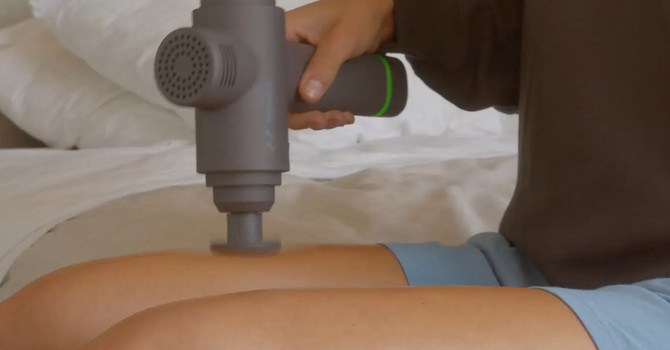What does this really mean? To many it is a collective term for the treatment of a host of problems: bladder issues, pelvic pain, organ prolapse, menstrual disorders, cysts, fibroids, endometriosis, IBS, constipation, dyspareunia, prostatitis, BPH, reproductive issues, and more. Stuff that can be embarrassing, unpleasant, and even life-altering for men, women, and children. The battery of tests designed to rule out sinister diseases can be expensive, uncomfortable, and often disappointingly inconclusive, giving no direction to treatment. While no one wants to learn that they have a serious disease, it’s frustrating when there is no clear pathway forward. In pursuit of resolution, many sufferers succumb to a litany of specialists, tests, pills, pads, devices, procedures, supplements, exercises, lifestyle changes, and surgeries. While these may be of some help in some cases, for many the outcomes are less than desirable.

Many of these conditions are routinely attributed to issues with the pelvic floor (PF) - the horizontal group of muscles and tissues located at the base of the pelvis. For years the literature and interventions cited weakness of the PF to be the culprit. The famous Dr. Arnold Kegel and his revolutionary Kegel exercise for the PF is an example. He first published his findings in 1948, claiming to have had an 84% cure rate of urinary incontinence in subjects who followed his exercise regimen. However, his studies were uncontrolled, lacked rigorous outcome measures, and have not been reproduced since. In spite of these facts, Kegels remain the go-to exercise prescribed for practically every pelvic problem under the sun, typically with disappointing results. Similarly, for years pelvic therapists have employed internal pelvic techniques to strengthen presumably weak PF muscles. Lackluster results prompted a paradigm shift in thinking to include the possibility that instead of the PF always being weak, it might be tight and needed relaxing. While these constructs may help some individuals, the proliferation of pills, products, surgeries, and suffering related to these issues attests to the fact that something is being missed.
Perhaps what’s being overlooked in our model of pelvic care (actually all of healthcare) is an appreciation of basic anatomy and physiology, and here’s why I say this.
Specialization in Healthcare
Our tendency in healthcare is specialization: gynecology, urology, and internal medicine manifest this construct. In the discipline of physical therapy we also have specialties: orthopedics, pelvic health, and many more. While there is a time and place for this, I would suggest that something gets lost in this process. Our tendency to compartmentalize the body and its problems into specializations has no anatomical basis, and also ignores the relationship between bodily parts and functions. For example, studies show that many people with low back pain also harbor bladder issues, possibly due to the strong relationship between the fascia of the urinary system and the fascia of the back muscles. Yet this anatomic relationship is typically not brought into practice, and the clinician for the back is not the same clinician who manages the bladder. Similarly, many individuals dealing with pelvic issues have active or past problems in the lower limb: plantar fasciitis, ankle sprain, shin splints, and fractures. Such injuries promote fascial dysfunction, creating abnormal tension which is transmitted to the pelvic region. Yet typically the care for the lower limb is provided by one clinician, while care for the pelvic issue comes from another specialist. Successful pelvic care requires a global, comprehensive approach to the body - not compartmentalization or emphasis on just the PF.
“Our tendency to compartmentalize the body and its problems into specializations has no anatomical basis, and also ignores the relationship between bodily parts and functions.”
The Nervous System Rules the Muscles
Many nerves in muscles are encapsulated in an elastic, sliding fascial matrix. But if this fascia becomes overloaded and densified, it loses its elasticity and glide. When this occurs every time the muscle contracts not all of it will fire, making it seem weak and needing strengthening, like Kegel exercises. But no matter how faithfully exercises are performed, if the nervous system cannot facilitate the muscle components then no strengthening occurs. Conversely, if the fascia surrounding the part of the nervous system that shuts muscles off is densified, then the muscle can remain facilitated and shortened. No matter how much stretching and relaxation is applied, the nervous system will win and the muscle will not lengthen or relax. Maybe this explains why Kegel exercises often don’t strengthen, and stretching / relaxation doesn’t shut muscles off.
Wisdom and intuition confirm that non-invasive, conservative measures should always be considered before pharmaceuticals and surgery, and the Fascial Manipulation-Stecco® model (FM) is excellent for pelvic therapy. It was never my intention to become a pelvic therapist - I got into it through the back door. As I worked the fascial system globally utilizing FM, changes were occurring in people’s pelvic problems that I never intended to impact. Yet that makes sense: the FM method treats globally and considers all past problems as impacting the present ones that manifest for no apparent reason, which describes so many pelvic issues. I don’t recall ever treating a pelvic case where there was not involvement in the lower limb, either active or past – even years ago with no remaining symptoms.
I hope you will consider these constructs if you are frustrated with dead-ends, don’t like the options presented to you, or are simply tired of living with your condition. Please feel free to give me a call, send a text, book an exploratory session, or schedule a consult. Let’s stop blaming these issues on childbirth, stress, and age: you have options for managing pelvic issues – act on them!
Wishing you health and joy,
Colleen
References:
Bø, K., Kvarstein, B., & Nygaard, I. (2005). Lower urinary tract symptoms and pelvic floor muscle exercise adherence after 15 years. Obstetrics & Gynecology, 105(5 Part 1), 999-1005.
Borello-France, D. F., Downey, P. A., Zyczynski, H. M., & Rause, C. R. (2008). Continence and quality-of-life outcomes 6 months following an intensive pelvic-floor muscle exercise program for female stress urinary incontinence: a randomized trial comparing low-and high-frequency maintenance exercise. Physical therapy, 88(12), 1545-1553.
Cassidy, T., Fortin, A., Kaczmer, S., Shumaker, J. T., Szeto, J., & Madill, S. J. (2017). Relationship between back pain and urinary incontinence in the Canadian population. Physical Therapy, 97(4), 449-454.
Cruz‐Montecinos, C., Gonzalez Blanche, A., Lopez Sanchez, D., Cerda, M., Sanzana‐Cuche, R., & Cuesta‐Vargas, A. (2015). In vivo relationship between pelvis motion and deep fascia displacement of the medial gastrocnemius: anatomical and functional implications. Journal of anatomy, 227(5), 665-672.
Kegel, A. H. (1948). Progressive resistance exercise in the functional restoration of the perineal muscles. American journal of obstetrics and gynecology, 56(2), 238-248.






